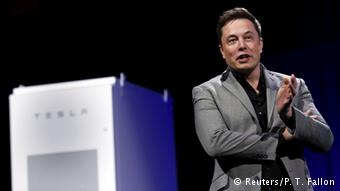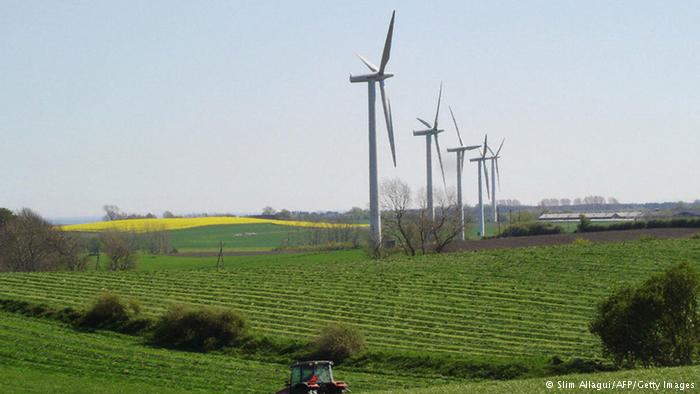Tesla battery may herald new era in energy storage
Power from the sun and wind is becoming more widespread. But energy storage devices are crucial in order to efficiently use such energy. Could the Tesla battery mark a new era for energy storage, in the home and beyond?
To prevent global warming from exceeding a dangerous 2 degrees Celsius, humankind has to transition out of fossil fuel usage by the middle of this century, according to the Intergovernmental Panel on Climate Change (IPCC). Renewable energies play a key role in the transition to low-carbon systems – but the energy produced by the sun or by wind must be somehow stored in order to be used efficiently.
This is where a new invention from California-based tech company Tesla Motors comes in. CEO Elon Musk introduced the “Tesla Energy” project, “a suite of batteries for homes, businesses, and utilities fostering a clean energy ecosystem and helping wean the world off fossil fuels.”
Store your energy at home
Tesla’s rechargeable lithium-ion battery is supposed to allow households and businesses to store the excess energy they get from solar panels on the roof, for example, and use it a later point.
That way, no energy is wasted, and dependency on the electricity grid would decrease dramatically – at least that’s the plan.
The “Powerwall Home Battery” comes in a 10-kilowatt-hour version for $3,500 (3,110 euros) and a 7-kilowatt-hour version for $3,000 (2,660 euros). The 10-kilowatt-hour version works as a backup – it could run an entire household in the event of a power outage – whereas the 7-kilowatt-hour version is designed for daily use.

Tesla CEO Elon Musk introduced the new battery product in California
Wind energy’s importance is growing in Germany and other European countries
More alternative energy sources
In ever more regions – including both industrialized and in developing countries around the world – governments and investors are turning toward renewable energy options.
As cleaner technologies present an economic advantage, this is accelerating their development.
“We’ll switch to wind and solar energy – because it’s cheaper, because other resources are getting rare, and to protect the climate,” said Michael Stemer, professor of energy storage at Regensburg University in southern Germany.
“We’ll use this energy for driving cars, for heating and for creating electricity. And in all these areas, storage devices will be essential,” Stemer told DW.
Batteries: higher supply, lower price
Although the Tesla battery is being promoted as a superior alternative, is not the only one to hit the market recently. Ever more companies are looking into ways to make energy storage feasible and convenient. That’s good news for thrifty homeowners who are considering purchasing a battery for home use.
“Because these batteries have gone into mass production, we are seeing the prices decrease faster than predicted,” said Uwe Sauer, an energy storage expert at the Technical University Aachen (RWTH) in western Germany. “The prices are already lower than what was expected for 2020,” he told DW.
And not just the batteries themselves are getting cheaper.
“Solar energy only costs 10 euro cents per kilowatt hour in Germany, as opposed to 29 cents for regular energy straight from the power outlet,” said Eicke Weber, director of the Fraunhofer Institute for Solar Energy Systems. He predicts a sharp increase in demand for these special batteries – in the industry, termed energy storage devices.
“In California, energy storage devices are already cheap today, and storing the energy only costs 10 cents per kilowatt hour,” Weber told DW.
“It will be interesting for individuals looking to optimize their energy supply. The revolution in energy storage will manifest itself quickly over the next few years.”
Turning electricity into gas or heat
Another storage technology is also rapidly moving forward: turning power into fuel. The power-to-gas process uses – you guessed it – electricity to split water into hydrogen and oxygen molecules. The hydrogen can be stored long-term and be used as fuel for cars.
Other processes can turn hydrogen and carbon dioxide into the fuels methane, diesel and kerosene – or methanol, an important raw material for chemical industries.
Replacing fossil energies with renewables and expanding the field of wind and solar energy brings with it many new storage techniques. Power plants in Denmark and northern Germany are already using excess wind energy to warm water for long-distance heating: this saves money, takes stress off the grid – and could help make fossil energy obsolete.
Text and photos: www.dw.de


